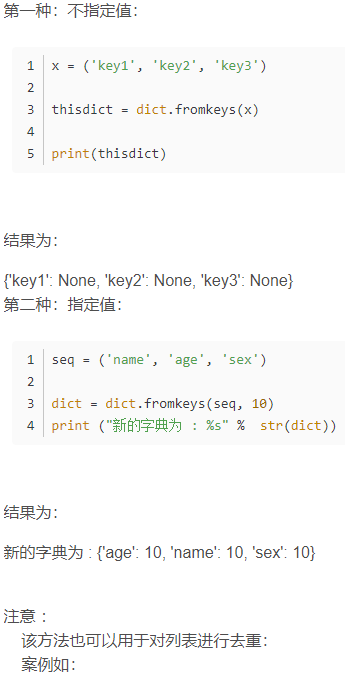dic.fromkeys()
dict.fromkeys(seq[, value]) 该方法返回一个新字典。
- seq -- 字典键值列表。
- value -- 可选参数, 设置键序列(seq)对应的值,默认为 None。

a = [1, 2, 4, 2, 4, 5, 6, 5, 7, 8, 9, 0]
b = {}
b = b.fromkeys(a)
c = list(b.keys())
输出:
[1, 2, 4, 5, 6, 7, 8, 9, 0]
fromkeys的用法:
用于创建并返回一个新的字典。两个参数:第一个是字典的键,第二个(可选)是传入键的值,默认为None。
例如:
dict1 = dict.fromkeys([1,2,3])
print(dict1)
dict1 = dict.fromkeys((1,2,3))
print(dict1)
这两种方式是一样的,结果为
再例如:
dict2 = dict.fromkeys([1,2,3],'test')
print(dict2)
结果为:
这里要注意一点,再例如:
dict3 = dict.fromkeys([1,2,3],['one','two','three'])
print(dict3)
这段代码并不能把one,two,three分别赋值给123,而是吧['one', 'two', 'three']当作一个值赋给了3个键。
结果为:
原文链接:https://blog.csdn.net/likunkun__/article/details/81122375




